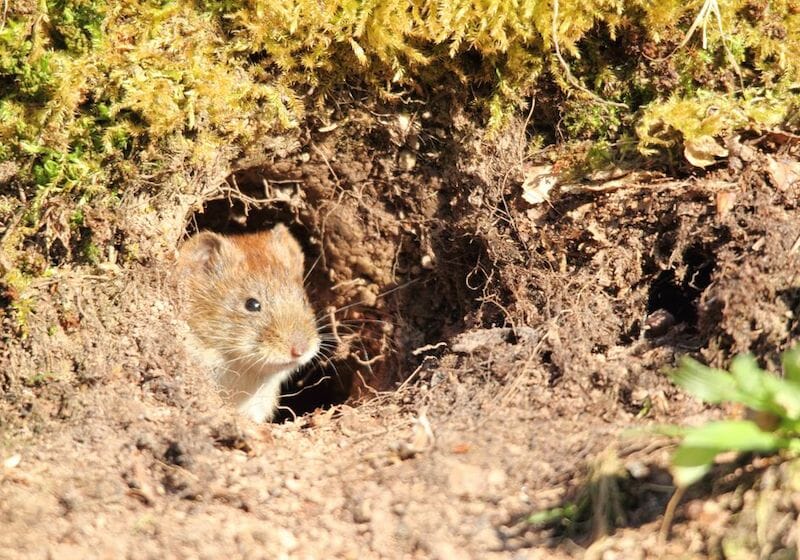Grasping Vole Parasite Control: Comprehensive Insights on Infestation Prevention and Treatment Techniques
As home proprietors and caretakers, the existence of voles can present a substantial obstacle to keeping the honesty of our exterior rooms. Recognizing the intricacies of vole behavior is essential in establishing effective insect control techniques. By recognizing the subtle signs of vole problem early on, we can take proactive measures to stop prevalent damages. In this discussion, we will explore the subtleties of vole actions, explore the identification of infestation indicators, and reveal one of the most effective prevention and therapy approaches. Remain tuned to discover the insights that will certainly encourage you to grasp vole insect control and safeguard your property versus these elusive rodents.
Comprehending Vole Habits
Analyzing the foraging patterns of voles uses useful understandings right into their behavior and environment choices. By observing their foraging behavior, researchers can get a far better understanding of where voles choose to develop their environments and the level of their ecological impact.
Research study shows that voles show selective feeding practices, liking seeds, tubers, and origins. This nutritional preference affects their foraging patterns, leading them to areas rich in plants and ground cover. In addition, voles are recognized to create fancy tunnel systems for foraging and nesting purposes, suggesting a high level of versatility to their environments.
Understanding vole actions is essential for implementing targeted parasite control actions that interrupt their habitat preferences and foraging activities (vole lawn damage). By examining their behavior, specialists can establish much more effective avoidance and therapy techniques to handle vole invasions

Identifying Indications of Vole Infestation
Vole invasions can be discovered by recognizing certain indicators of their visibility in an area. One of the most typical signs of a vole invasion is the presence of surface area runways.
An additional essential indication of vole infestation is the existence of tiny burrow openings in the ground. Additionally, voles are understood to leave behind eaten plant stems, roots, and bulbs near their burrow openings, suggesting their feeding task in the area.
Moreover, vole droppings can additionally signify their existence. Vole droppings are tiny, brownish, and cylindrical fit, appearing like grains of rice. Finding these droppings along runways or near burrow openings can verify a vole problem. By being vigilant for these signs, homeowner can quickly attend to vole problems and prevent further damage.
Executing Positive Prevention Steps

Furthermore, using natural vole deterrents like castor oil-based repellents or killer pee can serve as reliable precautionary measures. It is likewise advisable to on a regular basis examine exterior spaces for any kind of indications of vole task, such as paths or tunnel openings, to resolve potential invasions promptly. vole yard damage. By adopting these positive avoidance methods, homeowner Click Here can significantly minimize the likelihood of vole damage and keep the health and looks of their landscapes
Effective Treatment Methods
Incorporating targeted trapping techniques and making use of accepted rodenticides are important elements of efficient therapy strategies for handling vole problems. Trapping can be an efficient method to lower vole populations, particularly when put strategically in their active runways. Snap traps and live traps can both work, with the last enabling the capture and moving of voles. When making use of rodenticides, it is essential to follow safety guidelines to stop harm to non-target animals and animals. Location rodenticides in safe bait stations to reduce risks to unintended targets. Additionally, habitat alteration, such as reducing ground cover and removing resources of food, can assist discourage voles from infesting an area. Regular surveillance and upkeep are additionally key elements of effective treatment approaches to make certain that vole populaces are kept under control. By integrating capturing, rodenticides, habitat adjustment, and constant tracking, effective vole insect control can be attained.
Surveillance and Maintenance Tips
Regular tracking enables for the very early discovery of vole task, enabling prompt intervention before infestations aggravate. To properly check vole populations, strategically placed traps can be used in vole runways or near burrow entryways.
Furthermore, preserving a clean and clean landscape is crucial in vole avoidance. Clearing away debris, such as piles of wood or dense vegetation, eliminates potential vole habitats. Routinely trimming and mowing grass plant life aids lower vole concealing places and decreases their accessibility to food resources.
Moreover, recurring upkeep of physical obstacles, such as fencings or cable mesh, is crucial to avoid vole breach. Checking and fixing any type of damages to these structures guarantees that vole control remains effective in safeguarding homes from invasions. By integrating these tracking and maintenance techniques right into an extensive vole insect control strategy, people can efficiently manage vole populaces and safeguard their residential or commercial properties from damage.
Verdict
To conclude, grasping vole pest control calls for a solid understanding of vole behavior, the capacity to determine signs of infestation, applying positive prevention measures, reliable treatment techniques, and consistent surveillance and maintenance. By taking a thorough technique to vole control, individuals can properly handle and protect against invasions, ultimately securing their residential or commercial property and bordering atmosphere from damages brought on by these little rodents.
In this discussion, we check that will certainly explore the nuances of vole actions, delve right into the recognition of infestation signs, and uncover the most effective avoidance and treatment methods.Including targeted capturing techniques and making use of authorized rodenticides are necessary components of effective treatment strategies for handling vole problems. To properly monitor vole populaces, purposefully placed straight from the source traps can be made use of in vole runways or near burrow entries. Inspecting and repairing any damages to these frameworks ensures that vole control continues to be reliable in protecting buildings from problems. By integrating these monitoring and upkeep practices right into a thorough vole bug control plan, individuals can efficiently manage vole populaces and secure their homes from damage.